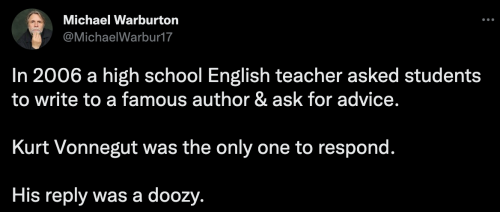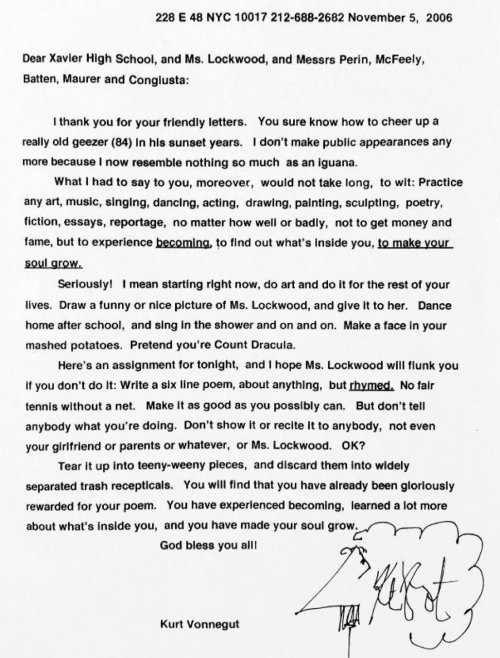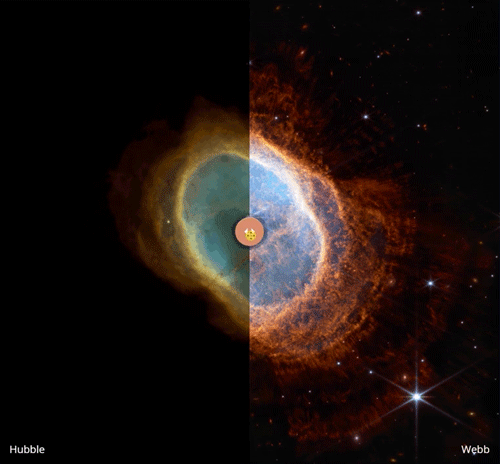I Can’t Believe I Never Posted Bones. I Thought I Had But I Guess I Imagined It.



I can’t believe I never posted Bones. I thought I had but I guess I imagined it.
Anyway, yes there is symbolism in every picture, to how busy the backgrounds are, to the books they are reading, and to the arrangement of the candles and their sticks. Even the candles lengths themselves have meaning.
More Posts from Isupportu and Others








I was originally just gonna do this giveaway on Twitter, but it wasn’t really taking off, so let me open it up to Tumblr, too! Here are the details:
GIVEAWAY ends September 15th
To enter on Tumblr:
Reblog this post! (You DO NOT have to follow me on Tumblr)
To enter on Twitter:
Follow my Vulcan Jewelry Twitter @trekkietreasure
Retweet the giveaway post on Twitter
The winner will get one custom Vulcan pendant of their choice (made in brass). I can do names, words, or short phrases! I will chose one winner but you can enter to win on both Tumblr and Twitter.
While the giveaway is going on, you can also get any of my other Vulcan script goodies like stickers or washi tape, on my Etsy for 10% off if you use code STARTREK55
Etsy Store

(via bp35096fzmo71.jpg (1007×715))
Harmony Cobel was experiencing a special kind of sexism where she is obviously meant to be a mad scientist among beakers and wires and shit, talking to one assistant per day at most
Instead of embracing STEMinism, Lumon steals her ideal and puts my girl in pink collar hell of middle management where she has to talk to people and be normal about things. she cannot do that. she only knows sing scary song and lab rat experiment
silly little headcanon time
since we get to see Spock basically quote Sherlock Holmes, it is now my belief that he's read the books.
Sherlock was Spock's first crush. He found his logic and demeanor interesting and flattering, appreciated the way he never had time for people that weren't willing to listen to him and/or some sort of asset to him. Appreciated that Sherlock plays violin, especially when he needs time to just sit and ponder some big mystery. Found his chemical dependency illogical but could over look it because he was amazing to read about. There wasn't anything Sherlock couldn't achieve with his logic and higher level of thinking. And then Spock grew a bit older and realized that wasn't a crush at all, it was more along the lines of representation. He related to Sherlock, he wasn't crushing on the man. With that knowledge he decided to spend his spare time rereading his mother's old books.
Only on his reread the only character he could seem to pay attention to was Dr. John Watson. The way he acted without thinking, how angry he would get with Sherlock for being so apathetic towards everyone and everything that wasn't the case he was actively involved with. The way Watson seemed to balance out the parts of Sherlock that were disliked by the vast majority of characters in the story. The head strong soldier who was willing to risk it all to help someone in need. He found his infatuation with John Watson fascinating. Eventually he finishes his reread of the old stories and gets caught up in growing up.
He recalls Sherlock Holmes from time to time, typically in passing, often when he looks at a fellow Starfleet officer and says, "Once you eliminate the impossible whatever remains, however improbable, must be the truth."
And then he meets the hard headed, fiery, strong willed cadet who already - in his first two weeks in the academy - made a reputation for himself being quick to act, James Tiberius Kirk.
(((Hugs))) to you.
My girlfriend and I decided to break up. She wants us to have an open relationship and see other people in addition to me but I'm just not into that. I want to be with only her. I hope I can still stay friends with her. She's a lovely person. I'm still sad about it though.
Read this:
“I want to tell a story about an invisible elephant.
Once upon a time, when I was in graduate school at UCSB, the department of religious studies held a symposium on diasporic religious communities in the United States. Our working definition for religious diaspora that day was, “religious groups from elsewhere now residing as large, cohesive communities in the US.” It was a round table symposium, so any current scholar at the UC who wanted to speak could have a seat at the table. A hunch based on hundreds of years of solid evidence compelled me to show up, in my Badass Academic Indigenous Warrior Auntie finery.
There were around 15-20 scholars at the table, and the audience was maybe fifty people. There was one Black scholar at the table, and two Latinx scholars, one of whom was one of my dissertation advisors. The other was a visiting scholar from Florida, who spoke about the diasporic Santería community in Miami. But everyone else at the table were white scholars, all progressively liberal in their politics, many of whom were my friends. Since there was no pre-written agenda, I listened until everyone else had presented. I learned a tremendous amount about the Jewish diaspora in the US, and about the Yoruba/Orisha/Voudou, Tibetan Buddhist, Muslim, and Hindu communities, and even about a small enclave of Zoroastrians.
As they went on, I realized my hunch had been correct, and I listened to them ignore the elephant, invisible and silent, at that table.
So I decided to help her speak the hell up. “Hello, my name is Julie Cordero. I’m working on my PhD in Ethnobotany, Native American Religious Traditions, and history of global medical traditions. I’d like to talk about the European Catholic and Protestant Christian religious diaspora in the United States, as these are the traditions that have had by far the greatest impact on both the converted and non-converted indigenous inhabitants of this land.”
Total silence. And then several “hot damns” from students and colleagues in the audience. I looked around the table at all the confused white faces. My Latinx advisor slapped his hand on the table and said, “Right!!?? Let’s talk about that, colleagues.”
The Black scholar, who was sitting next to me, started softly laughing. As I went on, detailing the myriad denominations of this European Christian Diaspora, including the Catholic diocese in which I’d been raised and educated, and the brutal and genocidal Catholic and Protestant boarding schools that had horribly traumatized generations of First Nations children, and especially as I touched on how Christians had twisted the message of Christ to try and force people stolen from Africa to accept that their biblically-ordained role was to serve the White Race, her laughs grew more and more bitter.
The Religious Studies department chair, who’d given a brilliant talk on the interplay between Jewish and Muslim communities in Michigan, stopped me at one point, and said, “Julie, I see the point you are so eloquently making, but you’re discussing American religions, not religious diasporic communities.” I referred to the definition of diaspora we had discussed at the start of the discussion, and then said, “No, Clark. If I were here to discuss religions that were not from elsewhere, I’d be discussing the Choctaw Green Corn ceremony, the Karuk Brush Dance, the Big Head ceremonial complex in Northern California, the Lakota Sun Dance, or the Chumash and Tongva Chingichnich ritual complex.”
It got a bit heated for a few moments, as several scholars-without-a-damn-clue tried to argue that we were here to discuss CURRENT religious traditions, not ancient.
Well. I’ll let you use your imagination as to the response from the POC present, which was vigorously backed by the three young First Nations students who were present in the audience (all of whom practice their CURRENT ceremonial traditions). It got the kind of ugly that only happens with people whose self-perception is that they, as liberal scholars of world cultures with lots of POC friends and colleagues, couldn’t possibly be racist.
Our Black colleague stood and left without a word. I very nearly did. But I stayed because of my Auntie role to the Native students in the audience.
I looked around at that circle of hostile faces, and waited for one single white scholar to see how unbelievably racist was this discursive erasure of entire peoples - including my people, on whose homeland UCSB is situated.
Finally, a friend spoke up. “If we are going to adhere to the definition of diaspora outlined here, she is technically correct.”
And then my dear friend, a white scholar of Buddhism: “In Buddhist tradition, the Second Form of Ignorance is the superimposition of that which is false over that which is true. In this case, all of us white scholars are assuming that every people but white Americans are ‘other,’ and that we have no culture, when the underlying fact is that our culture is so dominant that we’ve deluded ourselves into thinking it’s the neutral state of human culture against which all others are foreign. Even the Black people our ancestors abducted and enslaved we treat as somehow more foreign than ourselves. And, most absurdly, the peoples who are indigenous to this land are told that we belong here more than they do.”
People stared at their hands and doodled. The audience was dead quiet.
And you know what happened then? The elephant was no longer invisible, and my colleagues and I were able to have a conversation based on the truths about colonialism and diaspora. We were THEN able to name and discuss the distinctions between colonial settlements and immigrant settlements, and how colonial religious projects have sought to overtake, control, and own land, people, and resources, while immigrant and especially refugee diasporic communities simply seek a home free from persecution.
As we continue this national discussion, it is absolutely key to never, ever let that elephant be invisible or silent. You are on Native Land. Black descendants of human beings abducted from their African homelands are not immigrants. European cultures are just human cultures, among many. And the assignation of moral, cultural, racial superiority of European world views over all non-Euro human cultures is a profound delusion, one that continues to threaten and exterminate all people who oppose it, and even nature itself.
I hope that this story has comforted the afflicted and afflicted the comfortable.”
- Julie Cordero-Lamb, herbalist & ethnobotanist from the Coastal Band of the Chumash Nation

Hubble Telescope image vs. James Webb Telescope
-
 rahxep005 liked this · 1 week ago
rahxep005 liked this · 1 week ago -
 heliumparty liked this · 1 week ago
heliumparty liked this · 1 week ago -
 shinekocreator liked this · 1 week ago
shinekocreator liked this · 1 week ago -
 theolosi liked this · 1 week ago
theolosi liked this · 1 week ago -
 chrysalismoblivion reblogged this · 1 week ago
chrysalismoblivion reblogged this · 1 week ago -
 avalovessokka liked this · 1 week ago
avalovessokka liked this · 1 week ago -
 pansypinetree reblogged this · 1 week ago
pansypinetree reblogged this · 1 week ago -
 would-you-like-a-jelly-baby liked this · 1 week ago
would-you-like-a-jelly-baby liked this · 1 week ago -
 that-big-dyke-energy liked this · 1 week ago
that-big-dyke-energy liked this · 1 week ago -
 jumbledbee reblogged this · 1 week ago
jumbledbee reblogged this · 1 week ago -
 ionlydidthisforspirk liked this · 1 week ago
ionlydidthisforspirk liked this · 1 week ago -
 immabebaby reblogged this · 1 week ago
immabebaby reblogged this · 1 week ago -
 thedivinemissema reblogged this · 1 week ago
thedivinemissema reblogged this · 1 week ago -
 helianthusaster reblogged this · 1 week ago
helianthusaster reblogged this · 1 week ago -
 helianthusaster liked this · 1 week ago
helianthusaster liked this · 1 week ago -
 backstagepuppetmaker liked this · 1 week ago
backstagepuppetmaker liked this · 1 week ago -
 th1s-1s-my-aesthet1c liked this · 1 week ago
th1s-1s-my-aesthet1c liked this · 1 week ago -
 iscriptikus reblogged this · 1 week ago
iscriptikus reblogged this · 1 week ago -
 rrr-nightingale liked this · 1 week ago
rrr-nightingale liked this · 1 week ago -
 sundaysamurai liked this · 2 weeks ago
sundaysamurai liked this · 2 weeks ago -
 kaisius liked this · 2 weeks ago
kaisius liked this · 2 weeks ago -
 sithiere liked this · 2 weeks ago
sithiere liked this · 2 weeks ago -
 codegreen14 liked this · 2 weeks ago
codegreen14 liked this · 2 weeks ago -
 oneiroartsworld liked this · 2 weeks ago
oneiroartsworld liked this · 2 weeks ago -
 cookiegamer reblogged this · 2 weeks ago
cookiegamer reblogged this · 2 weeks ago -
 cookiegamer liked this · 2 weeks ago
cookiegamer liked this · 2 weeks ago -
 loosersworld reblogged this · 2 weeks ago
loosersworld reblogged this · 2 weeks ago -
 loosersworld liked this · 2 weeks ago
loosersworld liked this · 2 weeks ago -
 montgomerydadbodyscotty liked this · 2 weeks ago
montgomerydadbodyscotty liked this · 2 weeks ago -
 arts-i-enjoy reblogged this · 2 weeks ago
arts-i-enjoy reblogged this · 2 weeks ago -
 parrot-parent liked this · 2 weeks ago
parrot-parent liked this · 2 weeks ago -
 v-e-l-v-e-t-g-o-l-d-m-i-n-e reblogged this · 2 weeks ago
v-e-l-v-e-t-g-o-l-d-m-i-n-e reblogged this · 2 weeks ago -
 thessalian liked this · 2 weeks ago
thessalian liked this · 2 weeks ago -
 slightlycrackedteapot reblogged this · 2 weeks ago
slightlycrackedteapot reblogged this · 2 weeks ago -
 slightlycrackedteapot liked this · 2 weeks ago
slightlycrackedteapot liked this · 2 weeks ago -
 mariapoda reblogged this · 2 weeks ago
mariapoda reblogged this · 2 weeks ago -
 mariapoda liked this · 2 weeks ago
mariapoda liked this · 2 weeks ago -
 honeyrumdecisions reblogged this · 2 weeks ago
honeyrumdecisions reblogged this · 2 weeks ago -
 honeyrumdecisions liked this · 2 weeks ago
honeyrumdecisions liked this · 2 weeks ago -
 evangeliamerryll liked this · 2 weeks ago
evangeliamerryll liked this · 2 weeks ago -
 qohpremise liked this · 2 weeks ago
qohpremise liked this · 2 weeks ago -
 eattacelerystalk-blog liked this · 2 weeks ago
eattacelerystalk-blog liked this · 2 weeks ago -
 celestiasolaria liked this · 2 weeks ago
celestiasolaria liked this · 2 weeks ago -
 sweetmariabear liked this · 2 weeks ago
sweetmariabear liked this · 2 weeks ago -
 wish-i-had-robin-wings liked this · 2 weeks ago
wish-i-had-robin-wings liked this · 2 weeks ago -
 globbinit liked this · 2 weeks ago
globbinit liked this · 2 weeks ago -
 ncc-1701-uss-enterprise liked this · 2 weeks ago
ncc-1701-uss-enterprise liked this · 2 weeks ago -
 valiantsparkswolf reblogged this · 2 weeks ago
valiantsparkswolf reblogged this · 2 weeks ago






